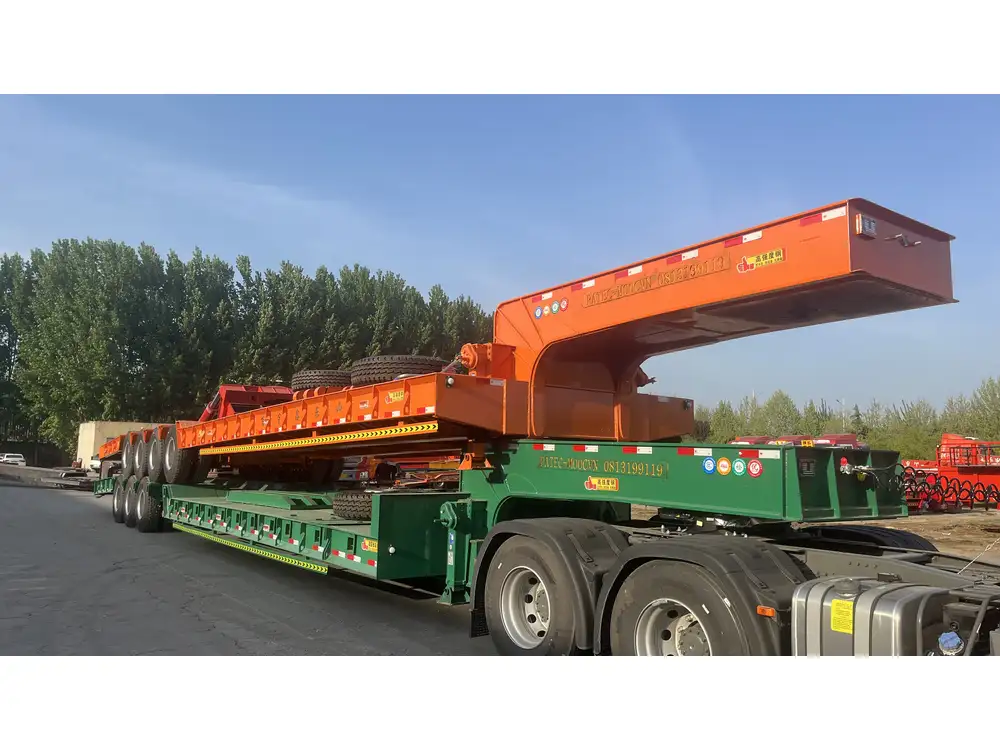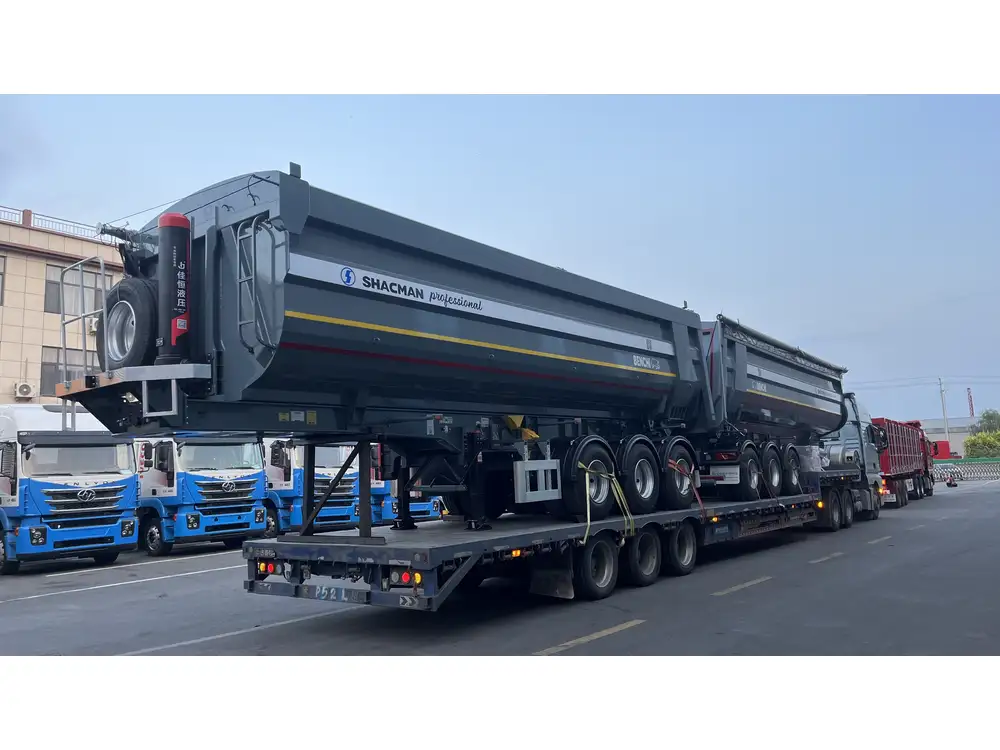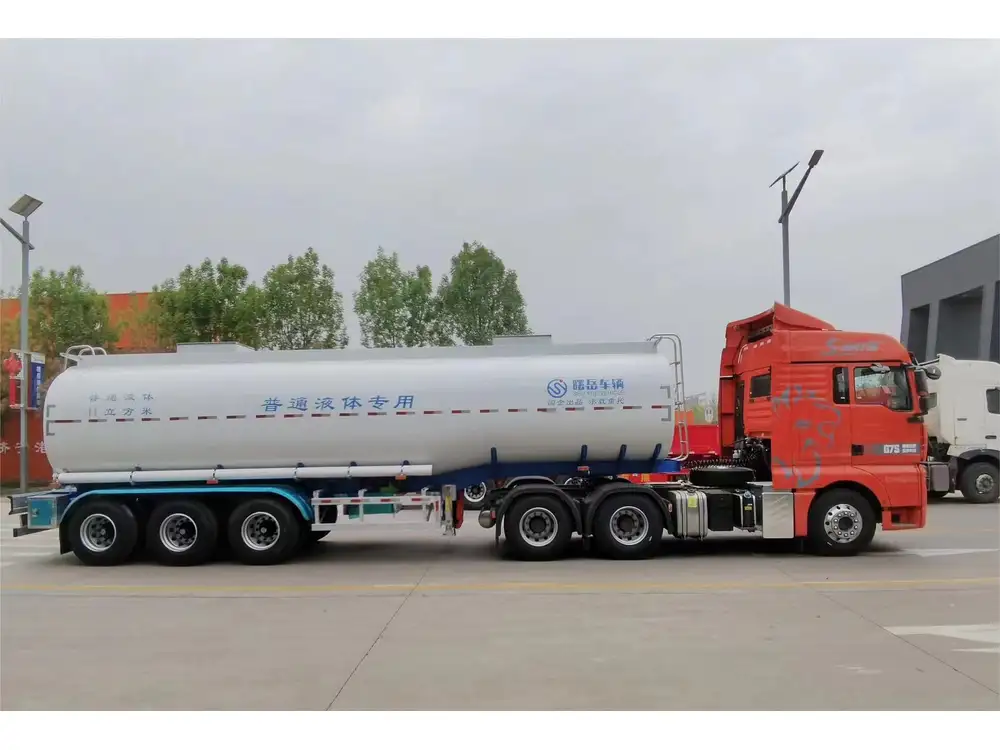When it comes to hauling materials, selecting the appropriate dump trailer size is paramount, especially if you’re dealing with specific volumes such as ten cubic yards. Whether you’re in construction, landscaping, or waste management, the nuances of your trailer choice can significantly impact your operational efficiency and overall costs. This article delves into the complexities surrounding the question, “What size dump trailer do I need for 10 yards?”, ensuring you are well-equipped with the necessary knowledge to make an informed decision.
Understanding Dump Trailer Capacities
What is a Dump Trailer?
A dump trailer is a heavy-duty trailer designed for transporting and unloading loose materials. They’re equipped with a hydraulic mechanism that enables the trailer bed to tilt, allowing for easy unloading of items like dirt, gravel, asphalt, or debris.

Assessing Volume Vs. Weight
Before diving into specific trailer sizes, it’s crucial to understand the difference between volume and weight. Dump trailers are often specified in terms of their weight capacity and volume capacity. Here’s how to assess them:
- Volume Capacity: This indicates how much space the trailer has in cubic yards. For instance, a 10-yard dump trailer indicates it can carry 10 cubic yards of material.
- Weight Capacity: This reveals how much weight the trailer can safely load, which often depends on the type of material being hauled.
Calculating Cubic Yards
One cubic yard measures 27 cubic feet. Therefore, ten cubic yards equal 270 cubic feet. This understanding becomes essential when evaluating if your chosen dump trailer can accommodate your load, especially when dealing with denser materials like concrete.
Choosing the Right Size Dump Trailer

Factors to Consider
Material Type: The density of the material significantly affects the choice of trailer size. For instance, here’s a comparison of how materials stack up based on their weight per cubic yard:
Material Weight Per Cubic Yard 10-Yard Total Weight Topsoil 1,200 lbs 12,000 lbs Gravel 1,500 lbs 15,000 lbs Sand 2,400 lbs 24,000 lbs Concrete 4,000 lbs 40,000 lbs Trailer Dimensions: A ten-yard dump trailer generally has dimensions that align with the following ranges:
- Length: 12 to 14 feet
- Width: 6 to 8 feet
- Height: 2 to 3 feet
- Load Capacity: Up to 16,000 lbs (may vary by manufacturer)
Towing Vehicle Compatibility: Ensure that your towing vehicle can handle the weight of the dump trailer plus the load. Check the Gross Trailer Weight Rating (GTWR) of your vehicle.
Popular Dump Trailers for 10-Yard Loads
1. Single Axle Dump Trailers
These trailers are lighter and facilitate easier towing, making them suitable for lighter materials like mulch or topsoil.
- Capacity: Typically around 7,000 to 10,000 lbs.
- Ideal Usage: Residential projects, landscaping, small construction sites.

2. Dual Axle Dump Trailers
Capable of supporting heavier loads, dual axle trailers are versatile and can manage larger and denser materials.
- Capacity: Ranges from 10,000 to 14,000 lbs.
- Ideal Usage: Larger construction projects, demolition, landscaping involving heavier materials.
3. Gooseneck Dump Trailers
These trailers offer enhanced stability and weight distribution due to their design, making them excellent for significantly heavy loads.
- Capacity: Anywhere from 14,000 to 30,000 lbs.
- Ideal Usage: Commercial construction, heavy materials, extensive landscaping work.
Pros and Cons: Dump Trailer Size Selection
Understanding the advantages and disadvantages can help streamline your decision-making process. Below is a succinct comparison:
| Trailer Type | Pros | Cons |
|---|---|---|
| Single Axle | Easier to tow, lighter weight, cost-effective | Limited capacity for heavy or bulky materials |
| Dual Axle | Versatile, suitable for diverse loads | Heavier and slightly more difficult to maneuver |
| Gooseneck | Superior stability, high weight limit | Higher price point, requires specific hitch type |

Calculating Your Needs
Step 1: Estimate Your Load
Begin by calculating the volume of materials you intend to transport:
- Determine Volume: For example, if you need to move 10 yards of dirt, that’s straightforward. But if you’re mixing materials, tally their individual cubic yard amounts.
Step 2: Weigh the Materials
Understanding the overall weight of what you are planning to transport is crucial:
- For 10 yards of topsoil: 12,000 lbs
- For 10 yards of concrete: 40,000 lbs
Depending on what you’re hauling, you may need a different size trailer to ensure safety and compliance with local regulations.

Step 3: Consider Local Regulations
Before making a purchase, check local regulations concerning weight limits on roads, as exceeding this can lead to fines and legal issues.
Frequently Asked Questions
1. Is it better to have a dump trailer that’s slightly oversized?
Yes, opting for a slightly larger trailer can provide additional flexibility and prevent overloading, which can lead to vehicle and trailer safety issues.

2. What are the common construction applications for a 10-yard dump trailer?
- Transporting materials like gravel, topsoil, sand, and construction debris.
- Used for site cleanup during and after construction jobs.
3. How can I ensure my trailer is roadworthy?
Regular maintenance checks, adhering to weight limits, and ensuring that your towing vehicle is compatible will help ensure the trailer’s roadworthiness. Ensure that tires are inflated correctly and that brakes are functioning properly.
4. Are there advantages to renting over buying?
Renting provides cost savings for one-time projects and reduces storage costs. However, for ongoing projects, purchasing might be the more economical choice in the long run.

Conclusion: Making the Right Choice
Choosing the right size dump trailer for hauling 10-yard loads involves weighing multiple factors, including the type of material, its density, the towing vehicle’s capabilities, and specific project requirements. By understanding these variables and assessing your needs accurately, you can enhance operational efficiency, reduce costs, and ensure compliance with regulations.
If you’re looking to purchase a dump trailer, ensure it fits your budget and operational needs while also considering the versatility for future projects. Whether it’s a single axle for lighter materials or a robust gooseneck, making the right choice will pay dividends in productivity and safety.
By navigating through this comprehensive guide, you’ll be set to make an informed decision regarding your dump trailer needs while optimally capitalizing on your investment in this essential piece of equipment.



